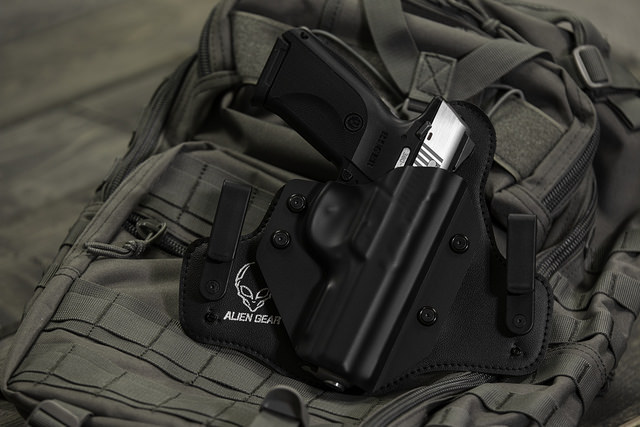In a 2-1 ruling, the three-judge panel found that the state of Hawaii overstepped its authority to regulate firearms by denying an individual the right to publicly carry a gun, openly or concealed.
“We do not take lightly the problem of gun violence,” Judge Diarmuid O’Scannlain concluded in the majority opinion. “But, for better or for worse, the Second Amendment does protect a right to carry a firearm in public for self-defense.”
If that were to happen, the court would have ruled in the course of a few years to reject the right to both open carry and concealed carry, raising fundamental questions about the Second Amendment.
THE MATTER OF YOUNG V. HAWAII
The central issue in the case was whether or not everyday citizens have a right to carry a gun in public for self-defense, or whether that right only applies when they are inside their home.
George Young, a state-licensed gun owner, brought the case after Hawaii authorities twice denied him a permit to openly carry his weapon. The state argued he did not satisfy the legal requirements for open carry. Young charged the state had infringed on his right to keep and bear arms.
Hawaii has some of the most restrictive gun regulations in the country, according to a statewide rating by the Law Center to Prevent Gun Violence. To openly carry a firearm, individuals need a permit and those are generally restricted to security officers or “exceptional” cases. Otherwise, gun owners are generally only allowed to carry a loaded firearm at home or work.
The majority on the three-judge panel argued that Hawaii’s regulation, in effect, meant the Second Amendment “only has force within the home.”
The majority concluded that once identified as an individual right focused on self-defense, “the right to bear arms must guarantee some right to self-defense in public.”
The sole dissenting opinion, Judge Richard Clifton, argued that the state was within its authority to regulate firearms in a way that fits its “legitimate interest in promoting public safety.”
Hawaii Attorney General Russell Suzuki lamented the ruling which he said would “undermine Hawaii’s strong gun control law and our commitment to protect the public.” Suzuki added that he would consult local and state authorities about pursuing the case further.
OVERTURNING THE DECISION AND ITS CONSEQUENCES
“There are some questions about whether this ruling will stand,” said Adam Skaggs, chief counsel at the Giffords Law Center to Prevent Gun Violence. “There is certainly precedent for these outlier opinions by Judge O’Scannlain to be taken up and reversed by the 9th Circuit.”
In 2014, a similar case (Peruta v. San Diego) came before a three-judge panel on the 9th Circuit. It dealt with a San Diego law restricting the right to carry a concealed firearm. Judge O’Scannlain wrote the majority opinion in another 2-1 ruling, upholding that right under the Second Amendment.
In a rare action, the 9th Circuit then convened an 11-judge panel to reconsider the matter. In 2016, all 11 judges agreed that bearing concealed arms is not a right covered by the Second Amendment.
Craig DeLuz, the director of legislative affairs for Firearms Policy Coalition, said he expects the Young case will follow in the footsteps of Peruta and will be overturned by a larger panel of judges on the 9th Circuit.
As a result, the states covered by the 9th Circuit, about one-fifth of the country, would have broader authority to regulate, restrict or ban both open carry or concealed carry.
“The 9th Circuit, by both saying you don’t have a right to open carry and you don’t have a right to conceal carry, what they would, in essence, be saying is you don’t have a right to bear arms,” DeLuz explained.
If that is the outcome, he added, “I don’t see how the Supreme Court doesn’t address that issue.”
SUPREME COURT WILL LIKELY CONSIDER FIREARMS IN PUBLIC
In recent years, the U.S. Supreme Court has been reluctant to hear arguments related to the Second Amendment. The high court hasn’t issued a ruling on a gun case since a landmark 2008 decision. In District of Columbia v. Heller, the court upheld an individual’s lawful right to bear arms even if not connected to service in a militia.
According to one California-based attorney, that decade-long quiet spell could soon end. If Supreme Court Justice nominee Brett Kavanaugh is confirmed, there’s a “better than average chance” the court will take up one of many Second Amendment cases awaiting a hearing.
It only requires a vote by four justices to bring a case before the Supreme Court. Some believe Judge Kavanaugh, who has previously ruled in defense of the Second Amendment in the D.C. Circuit Court of Appeals, may be more willing than his predecessor, Justice Anthony Kennedy, to grant a hearing and ultimately rule in favor of broadening gun rights.
Given the number of lower court cases dealing with carrying guns in public, Skaggs said it is fairly likely at least one of them will get to the Supreme Court. For example, the court could choose to hear Peruta v. San Diego, even though it passed on the case in 2017.
“If Kavanaugh is confirmed to the court, it is likely he will take an expansive view of the Second Amendment,” Skaggs said. But it is unclear how the court will ultimately decide the issue, even if Kavanauh shores up the conservative majority, he added. This year, there will likely be four justices on the bench appointed after the last Second Amendment case was heard.
The Tuesday ruling in California has put a spotlight on a critical and novel question. As Judge O’Scannlain wrote, in taking up the Young case, the court found itself “navigating waters uncharted” by the 2016 case or other Second Amendment cases.
“This is one of the most significant remaining Second Amendment questions that has yet to be decided,” Skaggs said, raising questions about publicly carrying a firearm that have yet to be addressed by the Supreme Court.
DeLuz said the combined issues of open and concealed carry addressed the 9th Circuit will finally force the question of whether there is a right to both “keep and bear Arms,” as stated in the Constitution.
“We see that as progress,” he noted. “Because we’re getting closer to the Supreme Court having to answer a fundamental question that we’ve been trying to get them to answer for almost a decade: whether or not we actually do have a right to bear arms.”






